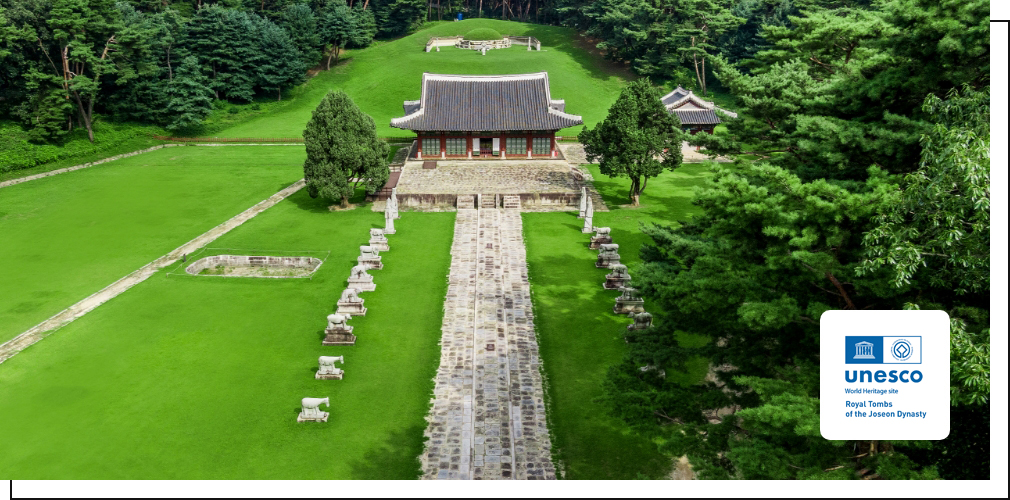


Currently, a total of forty-two tombs of kings and queens from the Joseon Dynasty and of emperors and empresses from the Korean Empire can be found in South and North Korea. Among them, the forty royal tombs of the Joseon Dynasty located in South Korea were inscribed on the World Heritage List in 2009.
▷ Criteria for the Royal Tombs of the Joseon Dynasty
: The Royal Tombs of the Joseon Dynasty were evaluated as meeting criteria (iii), (iv), and (vi).
⊙ Criterion (iii) is bearing "unique or at least exceptional testimony to a cultural tradition or to a civilization which is living or which has disappeared."
- Within the context of Confucian cultures, the integrated approach of the Royal Tombs of Joseon to nature and the universe has resulted in a distinctive and significant funeral tradition. Through the application of pungsu principles and the retention of the natural landscape, a memorable type of sacred place has been created for the practice of ancestral rituals.
⊙ Criterion (iv) is being "an outstanding example of a type of building, architectural or technological ensemble or landscape which illustrates (a) significant stage(s) in human history.”
- The Royal Tombs of Joseon are an outstanding example of a type of architectural ensemble and landscape that illustrates a significant stage in the development of burial mounds within the context of Korean and East Asian tombs. The royal tombs, in their response to settings and in their unique (and regularized) configuration of buildings, structures and related elements, manifest and reinforce the centuries old tradition and living practice of ancestral worship through a prescribed series of rituals.
⊙ Criterion (vi) is being "directly or tangibly associated with events or living traditions, with ideas, or with beliefs, with artistic and literary works of outstanding universal significance."
- The Royal Tombs of Joseon are directly associated with a living tradition of ancestral worship through the performance of prescribed rites. During the Joseon period, state ancestral rites were held regularly, and except for periods of political turmoil in the last century, they have been conducted on an annual basis by the Royal Family Organization and the worshipping society for each royal tomb.
▷ Integrity and Authenticity
As a serial nomination, the sites convey a complete understanding of the setting, layout and composition of the Joseon royal tombs. As individual sites, there are minor exceptions represented by part of sites included in the buffer zone. Urban development has affected the sight lines of some of the sites (Seolleung, Heolleung and Uireung), but it appears that urban construction is visible only near the top of certain tombs. Strict legislation now ensures that development within the buffer zones is controlled. Over time, elements of the sites have been repaired, restored and reconstructed The burial areas have seen the least intervention, while the ceremonial and entrance areas have seen the most, and largely because the use of wood as a building material. The original function has been continued at all sites and a sacred atmosphere has been largely maintained, especially at the less urban sites. Regarding form and design, only a few entrances have been changed; overall, the Royal Tombs of Joseon have marked authenticity.
▷ Management and protection requirements
Extensive legal protection, including traditional protection, exists, and an integrated management system is able to ensure consistency from property to property, including implementing and maintaining efficient measures in conservation initiatives and on-going property maintenance.